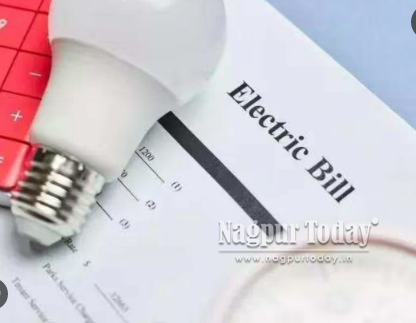Nagpur: Will electricity bills in Maharashtra reduce or rise? That question has left consumers confused after conflicting claims emerged over the Maharashtra Electricity Regulatory Commission’s (MERC) latest order on power tariffs. While Chief Minister Devendra Fadnavis has asserted that tariffs will be slashed by 26% over five years, power experts have raised red flags, stating that consumers, especially those in higher consumption brackets, will actually face steeper bills in the immediate future, according to media reports.
Chief Minister Fadnavis on Wednesday announced that power tariffs across Maharashtra will be reduced by 26% over the next five years, starting with a 10% cut in the first year itself. The new tariffs will be effective from July 1, 2025. Fadnavis termed the recent MERC order on the Maharashtra State Electricity Distribution Company Ltd’s (MSEDCL) review petition as “historic” and claimed it would offer relief to domestic, industrial, and commercial consumers alike.
He further stated that nearly 70% of electricity consumers in the state consume less than 100 units per month, and they will experience the steepest reduction of 10% in their bills.
Fadnavis credited the tariff reduction to increased reliance on solar power under the Chief Minister Solar Agricultural Feeder Scheme 2.0 and upcoming power purchase agreements focused on green energy, which he claimed would substantially reduce power procurement costs for MSEDCL.
Experts call it a U-turn, warn of hikes
However, leading power sector experts have contradicted the Chief Minister’s claims, stating that the revised MERC order, far from offering relief, will actually increase power bills for most consumers.
Former independent director of MSEB and power sector expert R.B. Goenka called the revised MERC order a “U-turn” from its earlier decision that had promised tariff reduction. “The first MERC order was indeed historic, offering tariff cuts. But the new order, issued after MSEDCL’s review petition, will increase tariffs and significantly hurt consumers, particularly those using rooftop solar power and high-capacity connections,” said Goenka.
Another expert, Mahendra Jichkar, warned that residential and commercial consumers will face increased bills from July 2025 onwards. “Calculations clearly show that the bills for common citizens will go up, especially for those consuming above 100 units,” he added.
Data from the MERC order indicates the following changes for domestic consumers:
Consumption Slab Current Rate (Rs/unit) Rate from July 1, 2025 (Rs/unit)
100–300 units 10.29 11.10
300–500 units 14.55 16.85
Above 500 units 16.54 19.15
Thus, consumers using over 100 units will face higher energy charges starting July 2025.
For commercial consumers, base energy charges will rise from Rs 8.52/unit to Rs 8.90/unit from July 1, 2025. However, marginal reductions are projected from the next control year, with tariffs expected to drop to Rs 8.51/unit in 2026 and Rs 8.31/unit in 2027.
As per projections, tariff reductions are expected to begin from April 1, 2027, when energy charges for the 100–300 units slab will drop to Rs 10.65/unit after temporarily increasing to ₹10.80/unit in 2026.
Experts Sudhir Budhay and Goenka pointed out that while the original MERC order in March 2025 projected an overall 10% tariff reduction for FY 2025-26 and a 16% cumulative reduction by FY 2029-30, the revised calculations from the review petition significantly dilute the immediate benefits.
Adding to the controversy, experts have slammed MERC for bypassing standard regulatory practices. Goenka, who had filed an intervention in the matter, revealed that MERC did not conduct a public hearing before issuing the revised order. “Even stakeholders and intervenors were not provided copies of the MSEDCL review petition. Such non-transparent decision-making severely undermines public trust,” Goenka said.
The MERC, in its June 25, 2025 order, admitted to several computational errors in its previous decision and accepted most of MSEDCL’s objections, triggering concerns among industry bodies and consumer rights groups.
Rooftop solar, industry to suffer
Experts have also flagged changes in solar power banking rules as a major setback for industries and large consumers. The new Time-of-Day (ToD) structure introduced in the order reportedly makes rooftop solar installations unviable for consumers with capacities over 10 kW, discouraging investments in clean energy.
“The new rules are a blow to both industry competitiveness and the green energy push,” said Goenka.
Short-term hike, long-term promise
While the state government projects a reduction in tariffs over five years, immediate relief appears unlikely for most consumers. Power bills are set to rise for many from July 1, 2025, especially those exceeding 100 units per month or relying on rooftop solar systems.
A phased reduction is projected to kick in from 2026-27, but with regulatory ambiguity and lack of transparency in the current process, consumer bodies and experts remain skeptical.
For now, consumers should brace for higher bills in the short term, with long-term benefits hinging on consistent policy execution and future regulatory clarity.















